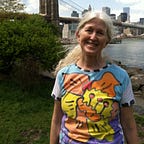Art Meets Tech
Pepsi Pavilion with Fog Sculpture; E.A.T.; Osaka, Japan; 1970
Experiments in Art and Technology (E.A.T.)(1967) was developed to bring artists and engineers together. Founders of E.A.T. included artists Robert Rauschenberg and Robert Whitman and engineers Billy Klüver and Fred Waldhauer. The group carried out projects that expanded the role of the artist in contemporary society, and explored collaboration between artists and technicians.
The best known example of E.A.T.’s initiative resulted in design and installation of an immersive dome for the Pepsi Pavilion at the 1970 World’s Fair, Expo ’70 at Osaka, Japan. The project was organized by Billy Klüver and Robert Whitman; the dome was designed by a team that included Robert Breer, Frosty Myers, and David Tudor. Over 75 artists and engineers from American and Japan also participated in the project.
The original structure consisted of a Buckminster Fuller-style geodesic dome covered by a water vapor cloud sculpture, designed by Fujiko Nakaya and Thomas Mee. Architect John Pearce fit a Mylar spherical mirror inside the structure; reflections produced real images resembling holograms. Spectators could look at an image, walk around it, and see it from all sides. Robert Breer designed “Floats,” six-foot high kinetic sculptures that moved around and emitted sounds. When a “Float” hit an obstacle or was pushed, it would reverse directions.
